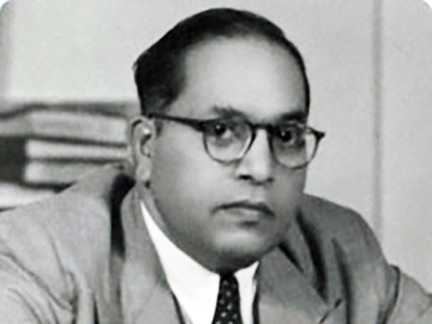The Guiding Light in Darkness: The Story of Ambedkar
The nineteenth century was drawing to a close. The vast land of India was bound by invisible chains called caste. While those born into upper castes lived in comfort and abundance, the lives of those born into lower castes were shrouded in a miserable darkness. All they received was contempt and exclusion.
In this dark era, on April 14, 1891, a child was born into a family facing such a dark fate. His name was Bhimrao Ramji Ambedkar. From a young age, he experienced the bitter pain of caste discrimination in his own heart. At school, he had to sit on a separate mat, and he was not allowed to draw water from the public well. This injustice ignited a burning flame in his young mind.
But Bhimrao was an extraordinary child. He had a deep passion for education, and despite the obstacles of caste discrimination, he studied with relentless effort. Amidst hardships, he even went abroad for higher education. He earned doctoral degrees from Columbia University and the London School of Economics. His knowledge helped him see the world through new eyes and understand the injustices prevailing in society.
Ambedkar, who never forgot the suffering of his people, decided to raise his voice for them. He became a lawyer, an economist, a political leader, and an outstanding social reformer. He dedicated his life to fighting for the rights and dignity of millions of people oppressed by the caste system.
His voice was powerful. He fought for the right to enter public water tanks. He spoke out for the right to enter temples. He demanded equal educational opportunities in schools. The Mahad Satyagraha he led in 1927 was a powerful protest against caste discrimination.
In 1936, he founded the Independent Labour Party to represent the interests of the working class. Later, he established the Scheduled Castes Federation and further advocated for the rights of those oppressed by the caste system.
After India gained independence, Ambedkar was appointed Chairman of the Drafting Committee of the Indian Constituent Assembly. The constitution he created guaranteed equal rights to all citizens. Any discrimination based on caste, religion, or gender was prohibited by the constitution. This was one of the greatest achievements of Ambedkar’s life.
The Poona Pact signed in 1932 between Ambedkar and Mahatma Gandhi is also an excellent example of Ambedkar’s visionary leadership. Although Ambedkar initially demanded a separate electorate for the depressed classes, they eventually agreed to reserved seats for them within the common electorate.
Well aware of the importance of education, Ambedkar established many educational and social institutions for the people oppressed by caste. The Bahishkrit Hitakarini Sabha and the People’s Education Society are prominent among them.
In 1956, towards the end of his life, Ambedkar embraced Buddhism along with millions of his followers. The teachings of equality and justice in Buddhism greatly inspired him.
Ambedkar passed away on December 6, 1956. But his ideas and the service he rendered still resonate in India and around the world today. He is forever remembered as a symbol of resistance against oppression and a protector of human dignity. Ambedkar Jayanti, celebrated every year on April 14th, is a tribute to his memory and a reminder to renew our commitment to equality and justice.
Ambedkar’s life teaches us that the struggle for justice and equality is never easy. However, he showed us that only by fighting relentlessly for it can we create a better world. That guiding light in darkness will forever shine in our hearts.
By Dr Damenda Porage
© Sathipattana Magazine



